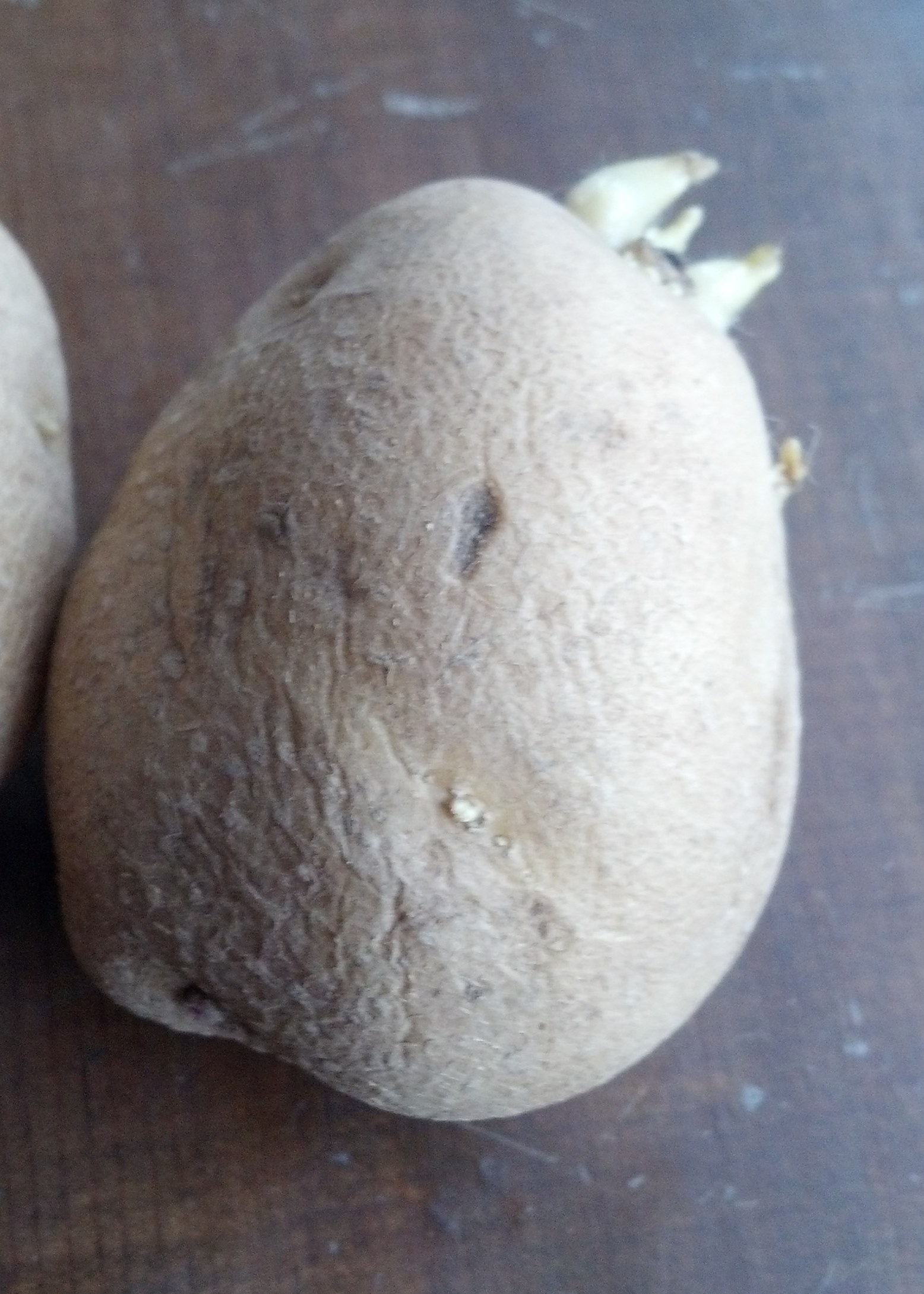How old is your potato?
Last week, I talked a little about questions to consider when ordering seed potatoes. What about how to handle those precious spuds when you receive them?
Ideal storage conditions for seed potatoes are 38 F and 95% humidity. This low temperature minimizes potato respiration and maintains the natural dormancy of the tuber, while high humidity minimizes moisture loss. Just a quick note on respiration: I don’t mean breathing! In plants, respiration is essentially the reverse of photosynthesis – it’s a process that consumes glucose to keep the cell functioning, and produces carbon dioxide, water and heat. The less the potato tubers respire, the less they will shrink in storage, and the less likely they are to break dormancy and sprout prematurely. Hopefully any seed potatoes you purchase will have been stored well. It’s worth asking your seed supplier about their storage conditions, since this will influence the performance of the seed potatoes once planted – by changing their “physiological age”.
Physiological age combines the time since the tuber formed (its “chronological age”), and the stress it underwent in growth and storage. “Younger” seed potatoes will emerge more slowly, and generally produce fewer, but larger, tubers, while “older” seed potatoes will emerge quickly and produce more small tubers. Temperature has a large effect on physiological age – potatoes that experience high temperatures, either during growth or storage, will be physiologically older. Potato variety also affects physiological age. Some varieties – the “good keepers” – have a long dormancy period and will have physiologically younger tubers than varieties that do not keep well.

So how do you know if you have “young” or “old” seed potatoes, and what can you do about it? First, find out what is known about the dormancy period of the variety. If it’s a poor keeper, the tubers are probably “old” and it’s important to keep them nice and cool till a few days before planting. Second, you can test a sample – take a few tubers and put them at room temperature, out of direct light, for several days. If they produce just a few sprouts from the apical end (opposite to the stem end), they are young. If they produce many sprouts from all over the tuber, they are middle-aged. Of course, if they are sprouting when you receive them, they are middle-aged or old. Seed potatoes that produce weak, branched, and/or hairy sprouts are too old and will not produce well.
If your seed potatoes are young, you have maximum flexibility – you can age seed, but sadly, in potatoes as in other life-forms, the aging process cannot be reversed! Physiologically older seed potatoes will emerge more quickly, and this is often desirable in organic production – we want crop plants to develop a strong canopy quickly to shade out weeds. To age young seed potatoes, store them at 50-55 F for 1-4 weeks before planting. Middle-aged and old seed potatoes need not be warmed until a few days before planting.
If you have the time and space, consider green-sprouting your potatoes. Place them in diffuse (NOT direct) light, for 1-4 weeks at 50-55 F. Ideally, all the potatoes will receive some light – shallow trays are ideal for this. I’ve also used mesh bags, with 4-5 inch channels sewn into them, hanging from a rack. European growers routinely green-sprout seed potatoes, and commercial bags and racks, designed to ease loading and unloading, are available. Green-sprouted potatoes produce short, tough, green sprouts, which emerge quickly after planting. The sprouts are much tougher than the elongated white sprouts you’ll see on potatoes that sprout in darkness, and are not easily broken off or damaged.
What has your experience (good or bad!) been with storing, pre-warming or green-sprouting seed potatoes?
This article was posted in Blog Posts, Uncategorized and tagged seed potatoes.